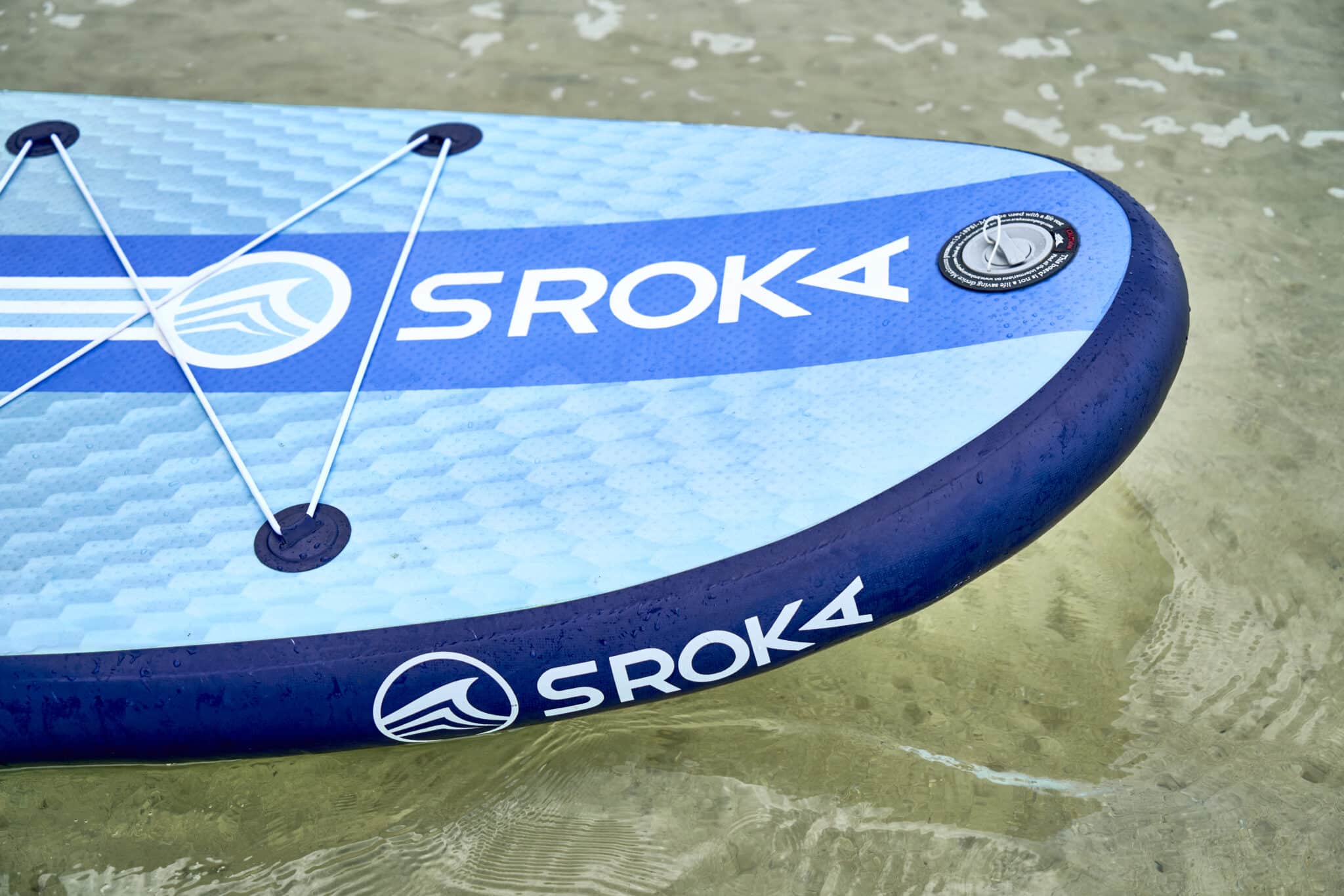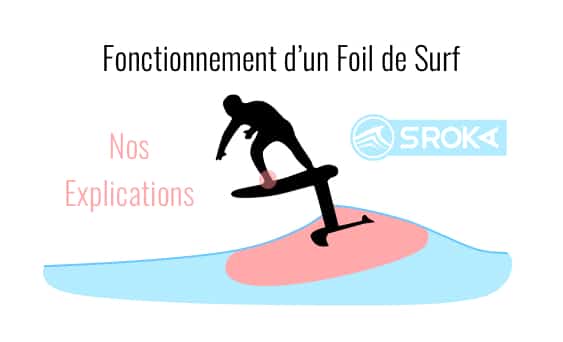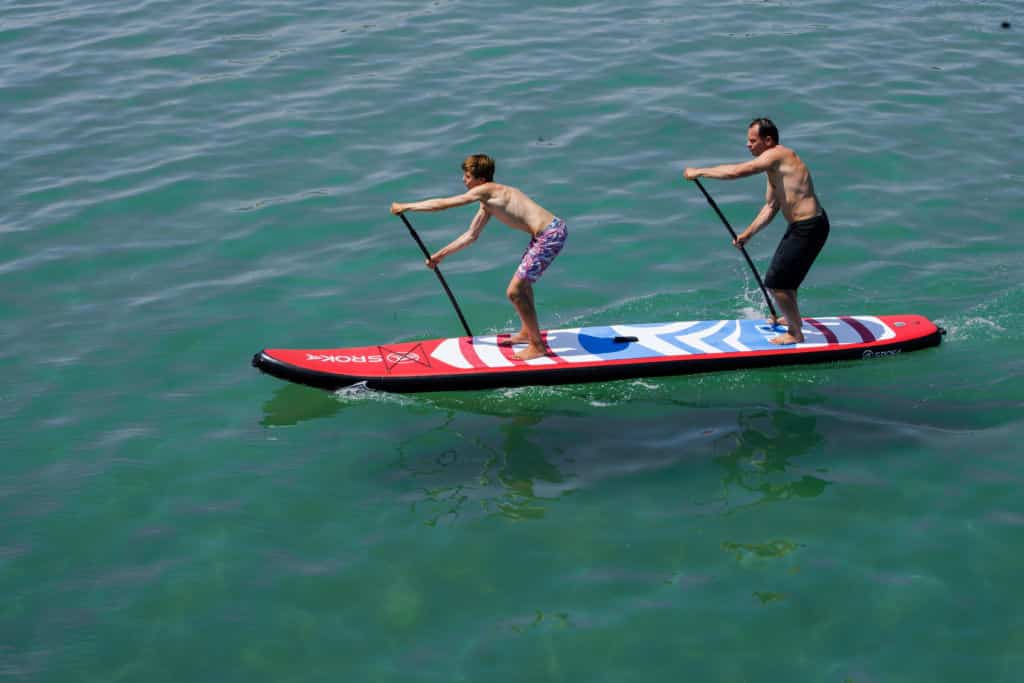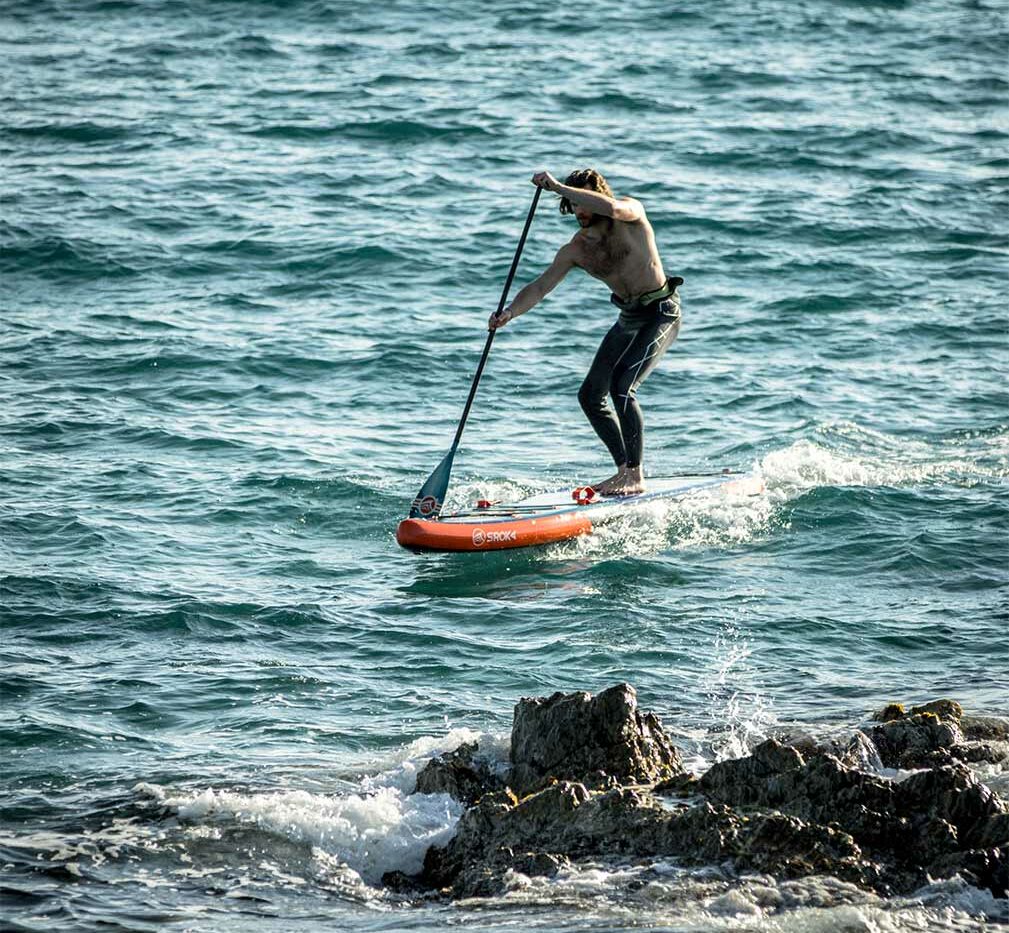 LE MAGAZINE
LE MAGAZINEHow to repair an inflatable paddle?


An inflatable paddle is a fun and practical way to glide across the water. However, like any piece of equipment, it can wear out over time, even if it’s well built. If your inflatable paddle develops a puncture or becomes damaged, don’t despair! You can repair your inflatable paddle yourself with a repair kit and a few simple tools. We’ll show you step-by-step how to repair your inflatable paddle, so you can get back to enjoying this great activity with complete peace of mind.

What materials are needed to repair an inflatable paddle board?
The advantage is that you won’t need a lot of materials to repair your inflatable SUP. It’s important to note, however, that if the tear or puncture is too large, you’ll need to call in a professional to repair your inflatable paddle.
Here’s the list of equipment you’ll need:
- An inflatable paddle repair kit: At Sroka, you receive a repair kit directly with your paddle when you buy it. If you didn’t get a repair kit, you can find one in sports stores and online stores specializing in water sports.
- Hot water
- A little mild soap : Don’t use abrasive products such as alcohol or ethanol, as these may weaken the paddle’s skin.
- A clean, dry cloth: Make sure your cloth is not dirty, to avoid damaging your paddle.
- A hairdryer: This is not compulsory, but it will heat the patch so that it sticks better.

How to repair your inflatable paddle: the steps
- Step 1: Start by cleaning the damaged area with mild soap and warm water. Then use a clean, dry cloth to dry the area and remove any traces of soap. Make sure the damaged area is dry and dust-free before proceeding to the next step.
- Step 2: Remove the protective film from the repair patch. If the film is self-adhesive, all you have to do is remove the protective film. If the repair patch is not self-adhesive, you’ll need to apply glue to the back of the patch before applying it.
- Step 3: Apply the patch to the damaged area. Make sure the patch is centered and completely covers the perforation or tear.
- Step 4: Remove any air bubbles that may have formed under the patch. You can use a smooth, flat object like a spatula or credit card to smooth the patch and remove any air bubbles.
- Step 5: Use a hair dryer to gently heat the patch. This will help it adhere properly. Make sure you don’t heat it too much or you risk damaging the paddle. Then let the patch cool and harden for about 10 to 15 minutes. Once dry, your inflatable paddle should be repaired and ready to use again.
How do I change the valve on my inflatable paddle?
Changing the valve on your inflatable paddle takes just a few minutes. All you need is the wrench supplied in the repair kit and the new valve. Start by deflating your paddle completely, then place your knees on either side of the valve to keep your paddle on the ground. Open the valve and use your wrench to unscrew it. Once the valve is completely unscrewed, it will come off by itself. Then take the new valve and screw it in place of the old one using the wrench. The valve must be properly tightened, but there’s no need to overtighten, as this will break both the valve and the wrench. Your paddle is ready again!
Our tips for maintaining your inflatable paddle
Here are a few tips on how to maintain your inflatable paddle to maximize its lifespan:
- We advise you to store your inflatable paddle away from direct sunlight and heat to prevent premature aging, especially in summer and during heatwaves. During hot weather, it’s very important not to leave your inflatable paddle in your car, as it could be damaged by the heat.
- Although it may seem logical, don ‘t drag your paddle along the beach to get it into the water. To avoid damage, carry it to the water without rubbing it on the ground.
- Rinse your inflatable paddle in fresh water as often as possible. This is especially important if you won’t be using it for a few days. You can also clean it with a clean, damp cloth.
- Finally, check the seams and fastening points regularly to prevent any tears or punctures. If you spot a damaged area, don’t return to the water with your paddle, and repair it directly by following the steps explained above.
If you have any further questions, or if you have any other requests, please don’t hesitate to contact us!
 Le Magazine
Le Magazine














